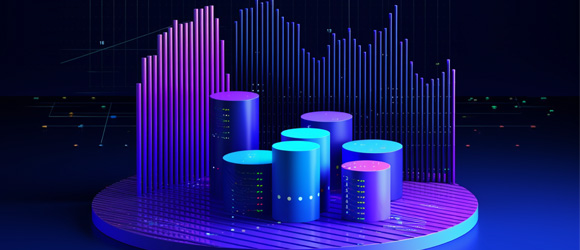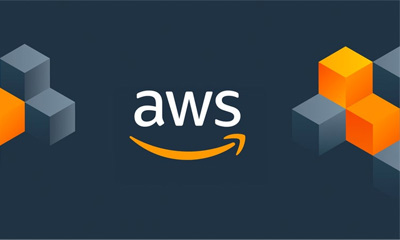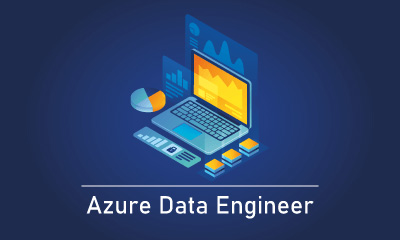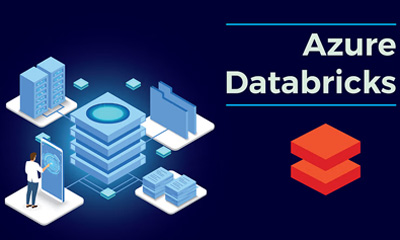Data science
Data Science is an interdisciplinary field that combines statistical analysis, machine learning, and domain expertise to extract insights from data. It involves data collection, cleaning, and processing to build predictive models and make data-driven decisions. With applications ranging from business intelligence to artificial intelligence, data science empowers organizations to leverage big data for strategic advantage.
Course Rating :
4.8 (926)

Course Overview
Data Science is an interdisciplinary field that combines statistical analysis, machine learning, and domain expertise to extract insights from data. It involves data collection, cleaning, and processing to build predictive models and make data-driven decisions. With applications ranging from business intelligence to artificial intelligence, data science empowers organizations to leverage big data for strategic advantage. Key tools and languages include Python, R, SQL, and Hadoop. Learn to harness the power of data and transform raw information into actionable insights through our comprehensive data science course. Embark on a journey to master data visualization, predictive analytics, and Machine learning .
Key Points
In this course, you will learn how to:
- Introduction to Data Science
- Data Collection and Cleaning
- Exploratory Data Analysis (EDA)
- Statistical Analysis
- Machine Learning Algorithms
- Programming Skills (Python and R)
- Big Data Technologies
- Data Visualization
- Machine Learning
- Capstone Project
Course Curriculum
What is Data Science?
Importance and Applications of Data Science
Data Science Lifecycle Overview
Role of Python in Data Science and Machine Learning
Setting Up Python Environment (Anaconda, Jupyter Notebooks)
Introduction to Python:
Installation and Setup
Python Syntax, Variables, Data Types, and Operators
Control Flow: Conditional Statements and Loops
Functions, Modules, and Packages
Error Handling (Exceptions)
Introduction to NumPy for Numerical Computing:
- Arrays, Array Operations, and Broadcasting
- Linear Algebra with NumPy
Data Analysis with Pandas:
- Series, DataFrames, and Indexing
- Data Cleaning and Preprocessing:
- Handling Missing Values, Outliers, and Duplicates
- Data Transformation and Feature Engineering
Introduction to Matplotlib:
- Basic Plots (Line, Scatter, Bar, Histogram)
- Customizing Plots, Annotations, Subplots
Advanced Visualization with Seaborn:
- Pair Plots, Violin Plots, Facet Grids
Interactive Visualizations with Plotly and Bokeh:
- Creating Dashboards, Interactive Widgets
Descriptive Statistics:
- Measures of Central Tendency, Dispersion
- Skewness, Kurtosis
Data Distribution and Correlation Analysis:
- Pearson, Spearman Correlation
- Scatter Matrix, Pair Plots
Handling Missing Data and Outliers:
- Imputation Techniques
- Detection and Removal Strategies
Probability Distributions:
- Discrete (Binomial, Poisson) and Continuous (Normal, Exponential) Distributions
- Probability Mass Functions (PMF), Probability Density Functions (PDF)
Hypothesis Testing:
- Null and Alternative Hypotheses
- T-tests, ANOVA, Chi-Square Tests
Statistical Inference:
- Confidence Intervals, p-values
- Type I and Type II Errors
Linear Regression:
- Simple and Multiple Linear Regression
- Assumptions, Model Evaluation Metrics (R-squared, MAE, RMSE)
Logistic Regression:
- Binary and Multiclass Classification
- Decision Boundaries, Probability Estimation
Decision Trees and Ensemble Methods:
- Tree Construction, Feature Importance
- Random Forests, Gradient Boosting Machines (GBM)
SVM for Classification and Regression:
- Linear SVM, Non-linear SVM (Kernel Tricks: Polynomial, RBF)
- Margin, Support Vectors
Tuning SVM Hyperparameters:
- C parameter, Kernel Coefficient, Gamma
K-Means Clustering:
- Cluster Formation, Elbow Method
- K-means++, Mini-batch K-means
Hierarchical Clustering:
- Agglomerative and Divisive Approaches
- Dendrogram Visualization
Dimensionality Reduction Techniques:
- Principal Component Analysis (PCA)
- Singular Value Decomposition (SVD)
Market Basket Analysis:
- Support, Confidence, Lift Metrics
Frequent Itemsets and Association Rules:
- Generating Rules, Rule Evaluation
Applications in Recommender Systems, Market Basket Analysis
Evaluating Model Performance:
- Accuracy, Precision, Recall, F1-score
- ROC Curve, AUC (Area Under Curve)
Cross-Validation Techniques:
- K-fold Cross-Validation, Stratified Cross-Validation
- Time Series Cross-Validation
Bias-Variance Tradeoff:
- Underfitting vs. Overfitting
- Regularization Techniques (L1, L2)
Basics of Neural Networks:
- Perceptron, Activation Functions (ReLU, Sigmoid, Tanh)
- Feedforward, Backpropagation
Deep Learning Libraries in Python:
- TensorFlow and Keras:
- Building Sequential and Functional Models
- Convolutional Neural Networks (CNNs) for Image Classification
- Recurrent Neural Networks (RNNs) for Sequence Modeling
PyTorch:
- Tensors, Autograd Mechanism
- Dynamic Computational Graphs
Time Series Analysis:
- Stationarity, Autocorrelation, Seasonality
- ARIMA and SARIMA Models for Forecasting
Natural Language Processing (NLP):
- Text Preprocessing (Tokenization, Stemming, Lemmatization)
- Sentiment Analysis, Named Entity Recognition (NER)
Recommender Systems:
- Collaborative Filtering, Content-Based Filtering
- Matrix Factorization Techniques (SVD)
Introduction to Big Data Technologies:
- Apache Hadoop and HDFS
- Apache Spark: RDDs, DataFrames, and Spark SQL
Distributed Computing with PySpark:
- Data Processing Pipelines
- Machine Learning Pipelines
Real-world Data Science Project:
- Problem Statement and Data Acquisition
- Data Exploration, Preprocessing, and Feature Engineering
- Model Building, Evaluation, and Optimization
- Deployment and Presentation of Results
Data Privacy and Security:
- GDPR, HIPAA Compliance
Ethical Considerations in Data Collection and Use:
- Bias and Fairness in Machine Learning Models
Best Practices for Model Interpretability and Transparency:
- Explainable AI (XAI) Techniques
Job Roles in Data Science and Machine Learning:
- Data Scientist, Machine Learning Engineer, Data Analyst, AI Researcher
Building a Data Science Portfolio:
- Showcase Projects, GitHub Repositories
Interview Preparation Tips:
- Technical and Behavioral Interview Questions
Industry-specific Case Studies and Applications:
- Healthcare, Finance, E-commerce, IoT, etc.
Learning Outcome
Upon completing a Data Science course, participants can expect to achieve the following learning outcomes:
Understand Data Science Fundamentals: Gain a solid foundation in the key concepts, methodologies, and applications of data science.
Proficient Data Handling: Acquire skills in data collection, cleaning, and preprocessing to ensure high-quality data for analysis.
Conduct Exploratory Data Analysis: Develop the ability to perform exploratory data analysis to identify patterns, trends, and insights in data.
Apply Statistical Techniques: Master statistical methods for analyzing data, including hypothesis testing, regression, and probability.
Implement Machine Learning Models: Learn to build, evaluate, and tune machine learning models using various algorithms and techniques.
Program in Python and R: Gain proficiency in using Python and R for data analysis and machine learning, leveraging their libraries and frameworks.
Handle Big Data: Understand and utilize big data technologies such as Hadoop and Spark to process and analyze large datasets.
Create Data Visualizations: Develop the ability to create insightful and effective data visualizations using tools like Tableau, Power BI, and Matplotlib.
Apply Machine Learning Techniques: Acquire comprehensive knowledge of machine learning concepts, and learn to build and deploy models effectively.
Execute a Capstone Project: Demonstrate the ability to integrate and apply all learned skills in a comprehensive capstone project, solving a real-world data problem.
Who this course is for?
Following are the professionals who can advance in their career by learning Data Science training:
The Data Science course is ideal for:
Aspiring Data Scientists: Individuals looking to start a career in data science and seeking a comprehensive understanding of the field.
Data Analysts and Business Analysts: Professionals who want to enhance their analytical skills and transition into data science roles.
Software Developers and Engineers: Technologists interested in expanding their expertise to include data science and machine learning techniques.
Statisticians and Mathematicians: Experts in statistics and mathematics looking to apply their knowledge to data science and predictive analytics.
IT Professionals: Those working in IT who want to leverage data science for better decision-making and strategic planning.
Researchers and Academics: Scholars who aim to incorporate data science methodologies into their research and academic work.
Managers and Executives: Business leaders who want to understand data science to make data-driven decisions and drive their organizations forward.
Graduate Students: Students in fields such as computer science, engineering, economics, and business who want to build a strong foundation in data science.
Entrepreneurs and Innovators: Individuals looking to harness data to drive innovation, develop new products, or create data-centric business models.
Anyone Interested in Data: Enthusiasts who are curious about data science and eager to learn how to analyze and interpret data effectively
FAQs
Data Science is an interdisciplinary field that uses statistical methods, algorithms, and technology to extract insights from structured and unstructured data. It is important because it helps organizations make data-driven decisions, identify trends, and solve complex problems.
The prerequisites typically include basic mathematics and statistics, programming knowledge (preferably in Python or R), basic computer science concepts, data manipulation skills, analytical thinking, curiosity and willingness to learn, and an understanding of business context.
The duration of the course can vary, but typically it takes 3 to 6 months to complete, depending on whether it is a part-time or full-time program.
You will primarily learn Python and R, which are widely used in data science for data analysis, visualization, and building machine learning models.
Yes, the course often includes networking opportunities such as guest lectures, industry panels, and workshops where you can interact with professionals in the field.
Yes, the course includes hands-on projects and practical exercises to help you apply theoretical knowledge to real-world data problems and gain practical experience.
You will have access to support from instructors and teaching assistants through forums, live sessions, and one-on-one mentoring. Additionally, resources like tutorials, documentation, and community support are available.
Yes, the course is designed to provide the skills and knowledge needed to pursue a career in data science. It covers key topics and practical experience, making you job-ready for roles such as data analyst, data scientist, and machine learning engineer.
After completing the course, you can pursue various roles such as Data Scientist, Data Analyst, Machine Learning Engineer, Business Analyst, Data Engineer, and more.
No prior experience in data science is necessary, but a background in the prerequisites such as basic programming, mathematics, and statistics will be beneficial for understanding the course material.
Certifications
Data Science related certifications that professionals often pursue to enhance their skills and credentials:
Certified Analytics Professional (CAP): Offered by INFORMS, this certification validates expertise in analytics and data-driven decision-making.
Cloudera Certified Professional (CCP) Data Engineer: Focuses on skills required to develop reliable, autonomous data pipelines that result in optimized data sets for a variety of workloads.
Microsoft Certified: Azure Data Scientist Associate: Validates skills in machine learning and data science using Azure tools and services.
SAS Certified Data Scientist: Validates skills in manipulating and transforming data, visualizing and modeling data, and deploying and monitoring models.
Google Professional Data Engineer: Certifies expertise in designing, building, and maintaining data processing systems on Google Cloud Platform.
IBM Data Science Professional Certificate: A beginner-friendly certification that covers data science tools and techniques using IBM’s cloud-based platform.
Databricks Certified Associate Developer for Apache Spark: Validates skills in developing Apache Spark applications using Databricks.
AWS Certified Machine Learning – Specialty: Validates skills in designing, implementing, deploying, and maintaining machine learning solutions on AWS.
Data Science Council of America (DASCA) – Senior Data Scientist (SDS): Validates advanced proficiency in data science and analytics.
Certified Business Intelligence Professional (CBIP): Offered by TDWI, this certification validates skills in business intelligence and data warehousing.
Enroll Free Demo Class
Have Any Questions ?
- 521 Dyson Rd HainesCity FL 33844
- info@rbcloudgenx.com
- +1 8043007153
Prerequisites
Here are the prerequisites for a Data Science course:
- Basic Mathematics and Statistics
- Programming Knowledge
- Basic Computer Science Concepts
- Data Manipulation Skills
- Analytical Thinking
- Curiosity and Willingness to Learn
- Understanding of Business Context
Our Other Courses
The AWS Data Engineering course is designed to provide in-depth knowledge and practical skills required to build, maintain, and optimize data pipelines.
In this Azure Data Engineering training course, the student will learn how to implement and manage data engineering workloads on Microsoft Azure.
RBCloudGenX’s Snowflake training Online is aligned with the latest curriculum of the Snowflake certification exam.
RBCloudGenX Databricks course is designed to equip learners with the knowledge and skills necessary to work with Apache Spark and Databricks.
Rate This Course !
Click on a star to rate it!
Average rating 5 / 5. Vote count: 1
No votes so far! Be the first to rate this post.





